Nestled behind my hotel and hidden away from the searing summer sun sits a fleet of new Giant Reign E+ mountain bikes, ready to be set up for a day pummelling trails.
As the name suggests, this new hybrid number is based on the brand's successful Reign model, and designed, as Giant puts it, for “aggressive trail and enduro riding”.
Its release is well timed too, with momentum gathering behind various e-bike specific enduro race series and a number of other brands offering similar style ‘winch up, plummet down’ big travel electric models.
With the bike dialled in, I spent a day riding a number of Les Gets' lesser known trails trying to get the measure of this new machine and seeing whether or not it managed to deliver on the Giant's promise.
Giant Reign E+ 0 PRO frame
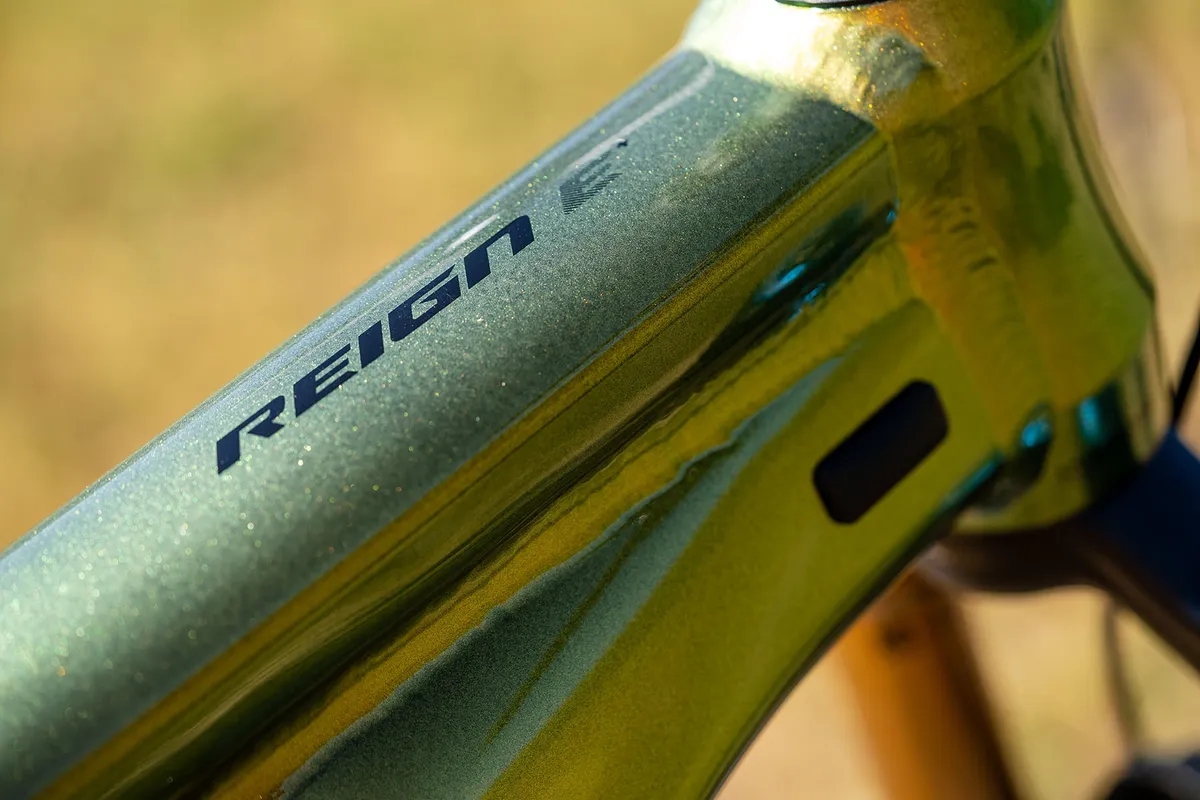
Giant isn’t exactly new to e-MTBs, already offering the burly Trance SX E+ electric trail bike. For the Reign E+ though, it wanted to get a little more extreme, upping the travel, increasing the wheelbase, slackening the head angle and, all being well, boosting its downhill credentials in the process too.
Scan the geometry chart and, in terms of reach at least, the Reign E+ isn’t that far off its analogue counterpart
As a result, using the Trance frame just wasn’t an option. Instead, the Reign E+ needed to be designed from the ground up using a new ALLUX SL tubeset as well as Giant's latest motor and battery (more on both of those later).
When it comes to suspension travel, the Reign E+ offers 170mm up front and 160mm at the rear via Giant's proven Maestro twin-link suspension system that's tuned in conjunction with Fox — in this case the Factory X2 rear shock.
Scan the geometry chart and, in terms of reach at least, the Reign E+ isn’t that far off its analogue counterpart. My medium test bike had a reach of 452mm compared to the non-electric version's 454mm.
The head angle is sufficiently slack and identical at 64.5 degrees, but the Reign E+ has a significantly steeper effective seat angle compared to the standard Reign, and sits at around 76 degrees.
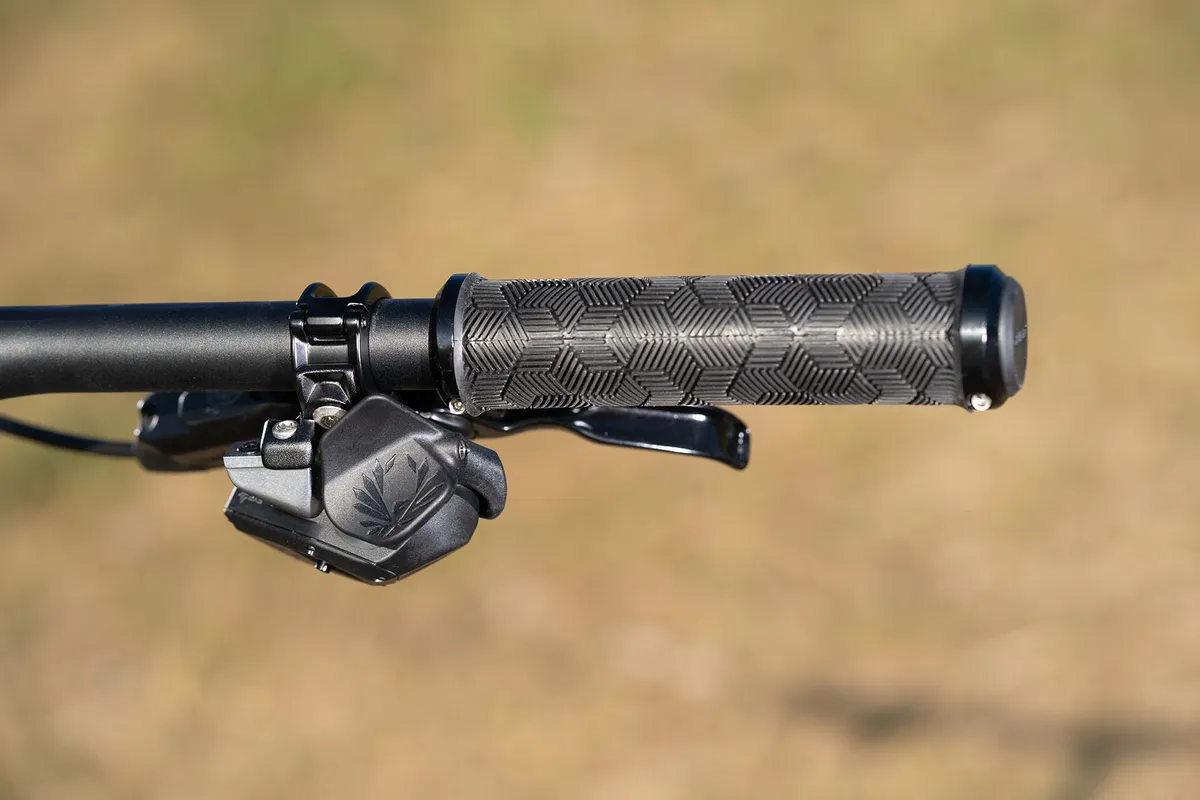
One of the biggest differences when it comes to geometry is the length of the rear centre (centre of bottom bracket axle to rear wheel axle)/ effective chainstay length.
The Reign E+ rear centre measures up just short of 470mm. When compared to other e-MTBs of similar intention, the back end of the Reign E+ is really quite lengthy: the Merida eOne-Sixty’s chainstays are 439.5mm while Specialized’s current Kenevo boasts 443mm numbers.
Giant claims this is down to the limitations of packaging the Maestro suspension system, motor and ensuring decent tyre clearance for widths of 2.6in rubber. It may also explain why it’s only offered with 650b wheels. Jumping up to 29in hoops would likely increase the rear centre further, which is less than desirable.
Giant has worked hard to create the cleanest, most effective cable routing possible for the rear derailleur, brake, dropper and integrated speed sensor (which is tucked away in the dropout) while still being easy to maintain. Both the rear derailleur cable and rear brake hose run through the chainstays and into the lower link before entering the down tube. This eliminates any cable slip, lowers friction and means you don’t need to cable tie them to the frame.
Giant Reign E+ 0 PRO engine and battery
Inside the belly of the Reign E+ sits a new 250W SyncDrive Pro motor which has been developed in conjunction with Yamaha. While the SyncDrive motor already exists, this updated unit gets “smarter” according to Giant. That’s down to the number of sensors it relies upon.
While the current model uses four, this latest Pro version gets six sensors, including one that's capable of detecting the gradient of the trail you’re on, as well as one that will monitor your acceleration.
The Syncdrive Pro can deliver 80Nm of torque and pump out up to 360 percent of additional pedal assistance.
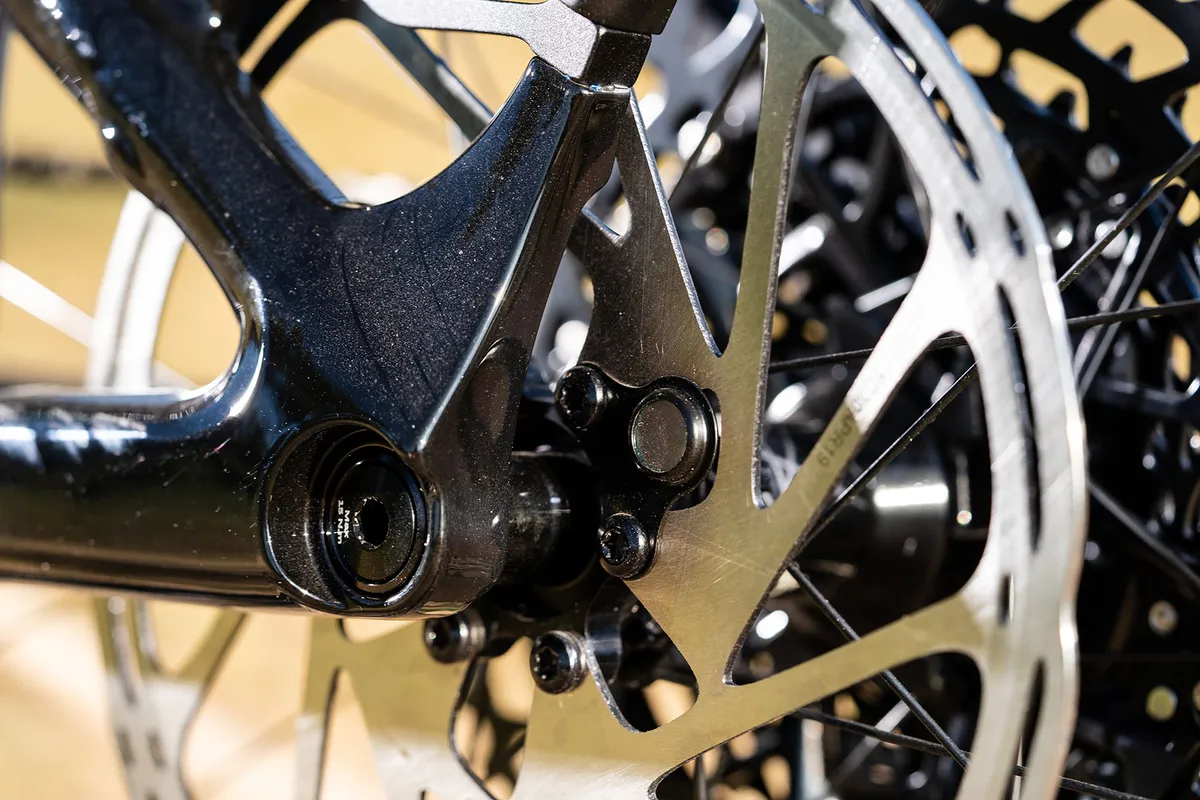
The reason Giant is claiming the new motor is smarter is down to its Smart Assist mode, which essentially selects the right motor mode or level of support you need at the right time automatically.
Manually toggling through the five modes isn’t exactly tough, but Giant says the Smart Assist mode “is able to use all 11 Micro-assist levels between 50 percent and 360 percent support ratio that are pre-programmed in the motor. These 11 levels are the same levels that are selectable when tuning the motor with the RideControl app. So instead of just five modes, this gives a much smoother and more gradual change in the support provided.”
There’s a number of other improvements too, including higher cadence support (up to 170rpm). The previous motor would taper power around 80 to 90rpm and not return to maximum power until you hit 120rpm. The new unit will give you full power from 40 to 130rpm without wavering.
The motor also gets a totally new cover to help completely seal it from the elements and provide better weather proofing of its guts from water and dirt. Not only that, but Giant also claims this latest motor is 15 percent quieter than the previous version.
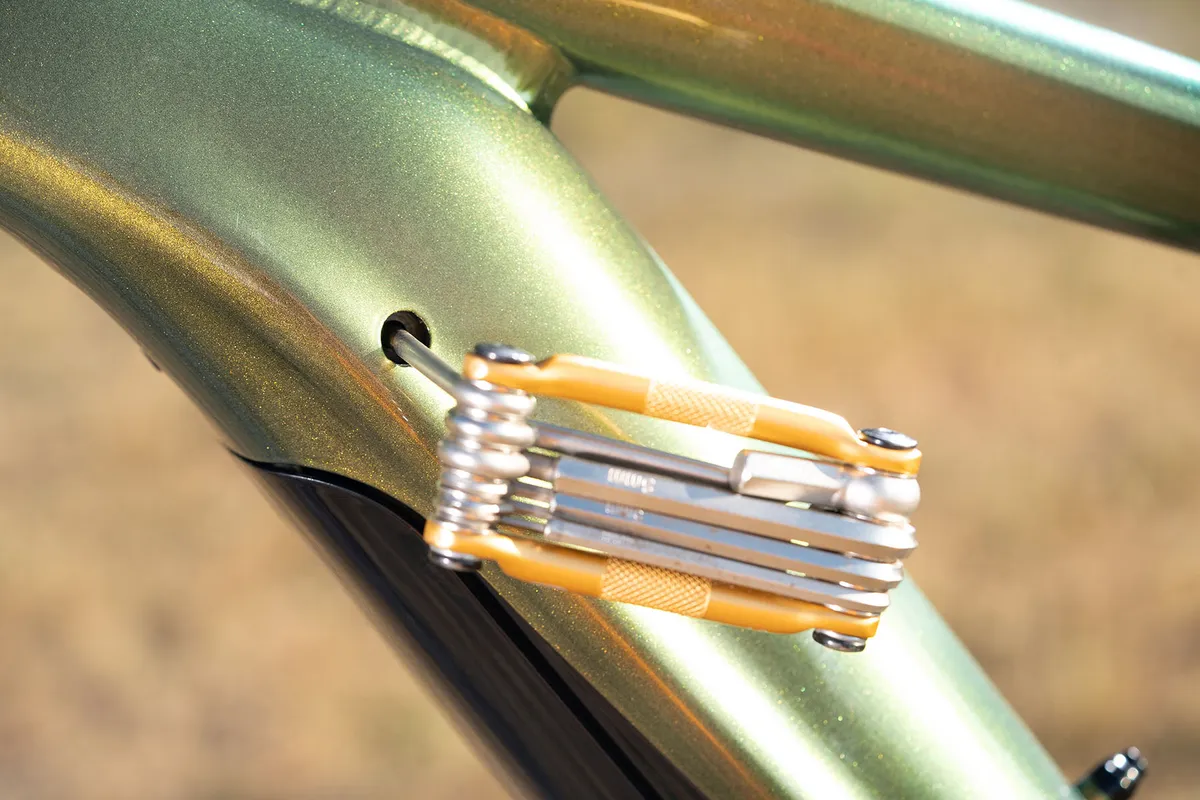
But it’s not just about the motor. The lithium ion battery is worth mentioning here too.
For starters, Giant has designed a totally new cover which includes an integrated down tube protector and rubber flap that helps to fully seal the gap between the battery and motor.
Giant's 250Wh EnergyPak Plus range extender ups the capacity to a whopping 750Wh, but this will add an extra 2.5kg to the bike
Giant has also ensured the battery locks solidly and securely into place. To remove the battery from the bike you’ll need a T25 Torx key to loosen it in the frame before unclipping the secondary security clip to release it fully. It’s neat and works well in practice.
The battery itself (which is made by Panasonic) might not be new but does conform to the EN5064 quality standard – Giant claims to be the only big brand meeting this.
This means that not only should it be properly robust, but it should deal with heat more effectively thanks to the widely spaced cells, which are protected within a honeycomb cell — if one cell overheats it won't impact on the others as much or as quickly.
While its capacity is pretty much in line with a number of other bikes on the market (though less than the likes of Specialized), Giant is offering its 250Wh EnergyPak Plus range extender, upping the capacity to a whopping 750Wh, but this will add an extra 2.5kg to the bike.
This additional power pack simply bolts into the bottle cage mounts and plugs into the charging port.
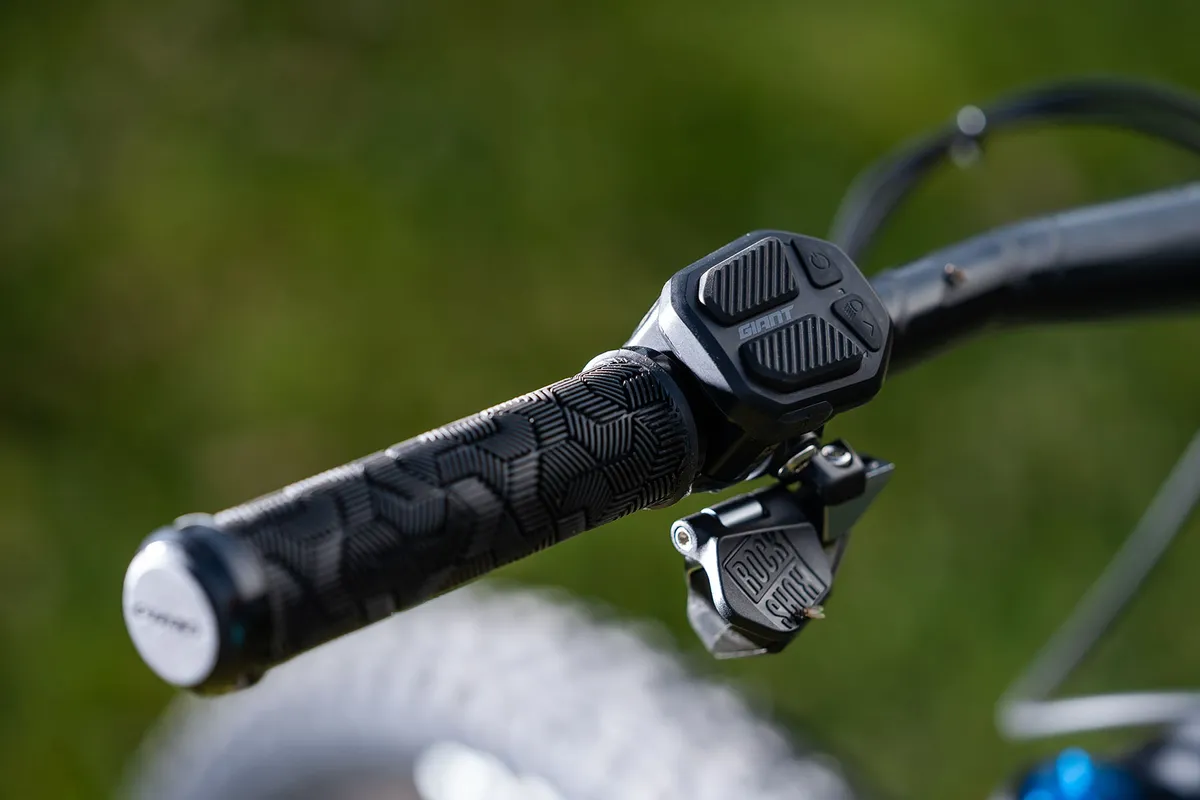
Controlling everything is Giant’s handlebar-mounted RideControl 1 remote, which allows you to quickly toggle up and down through the five motor modes. Small LED lights indicate which mode you’re in along with battery levels, but the lights aren’t the easiest to see in bright sunshine.
In terms of connectivity, the Giant system uses ANT+, claiming it makes it easier to sync with common GPS units to display ride data (some will have the option of showing battery life also).
That said, Giant does plan to bring out its own computer later down the line that will make mode and battery life visibility that bit easier, but it won’t offer any GPS related features.
Giant Reign E+ 0 PRO kit
As the Reign E+ PRO is the priciest bike in this new line-up, it’s no surprise that it comes dripping with some seriously fancy kit.
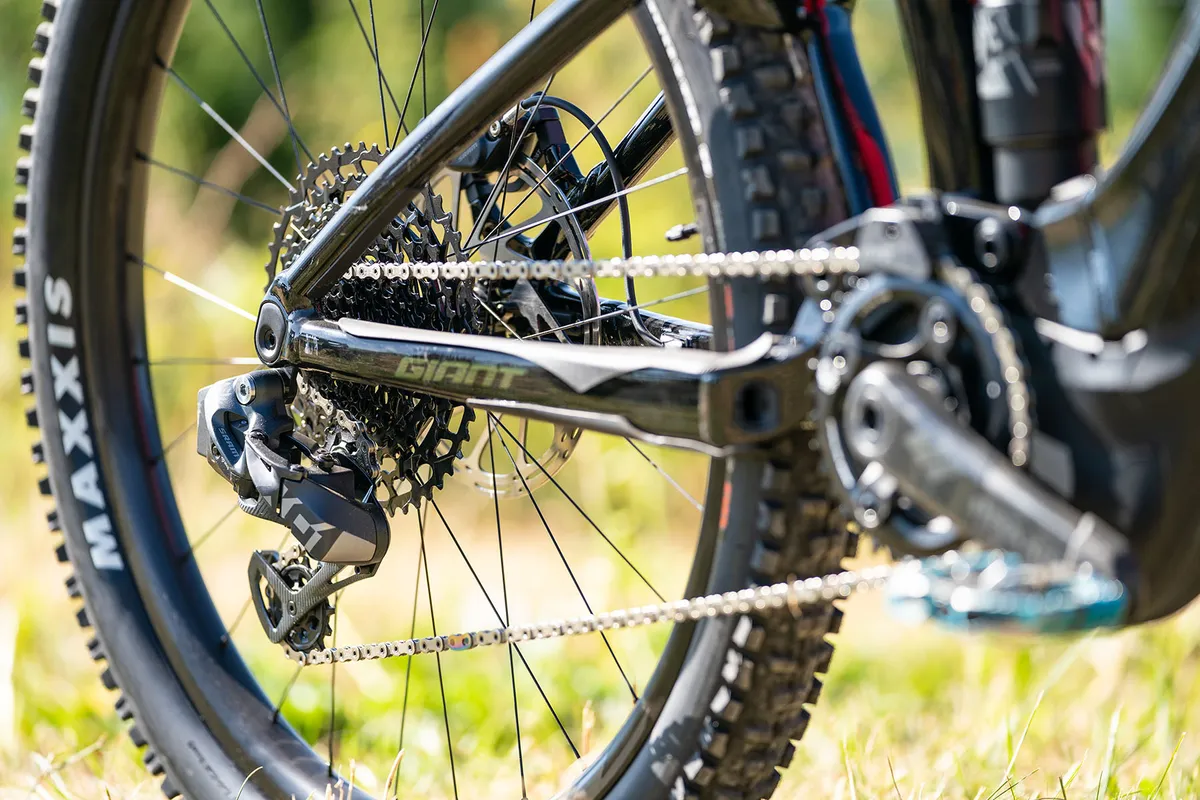
A Fox Factory 36 GRIP2 e-bike specific fork and X2 rear shock take care of suspension duties while SRAM look after the stopping and going. Giant has specced SRAM’s latest wireless X01 Eagle AXS gearing but paired it with the heavyweight, e-bike proof PG-1230 (NX Eagle) 11-50t cassette.
To keep cabling to a minimum and bling to the maximum, the PRO also get a Reverb AXS — although medium bikes only get a 125mm drop post.
SRAM Code R, not the top-flight RSC, brakes do the stopping and include a 220mm front rotor, 200mm rear, for a little extra punch.
The Reign E+ PRO also gets E-TRX carbon wheels, which boast 30mm internal width and custom DT Swiss hubs — DT Swiss makes hybrid wheels to deal with the rigours of e-MTB riding. These get more points of engagement for less lag under power — lag comes from the hub and motor so quicker pick-up is really important.
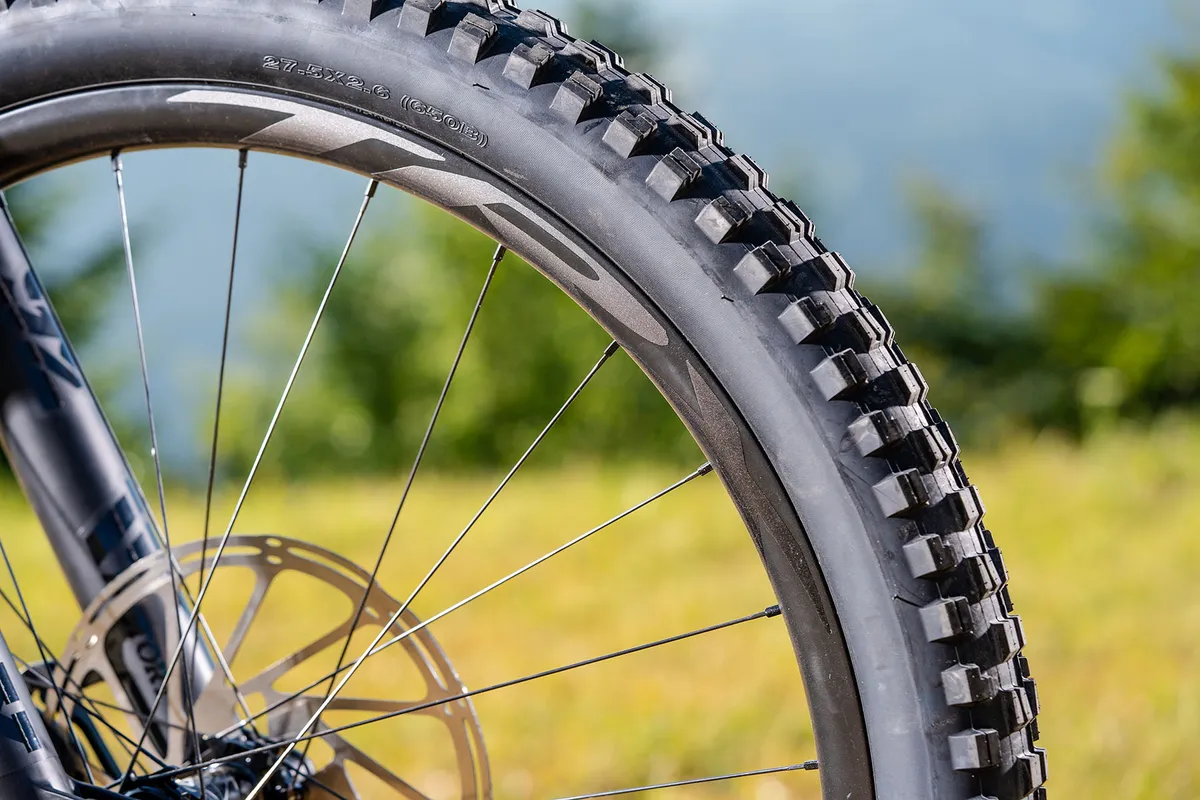
Maxxis tyres — Minion DHF up front and High Roller II at the rear — both in the MaxxTerra compound are dependable and predictable performers in all manner of conditions, so high fives to Giant for including them here. And it’s great to see the use of a DoubleDown casing on the rear to help prevent pinch flats, while the front gets the latest EXO+ casing.
One final thing worth mentioning with regards to the spec is that Giant has used 160mm cranks (the large and XL get 165mm numbers), which means decent pedal clearance without having to jack the bottom bracket up too high.
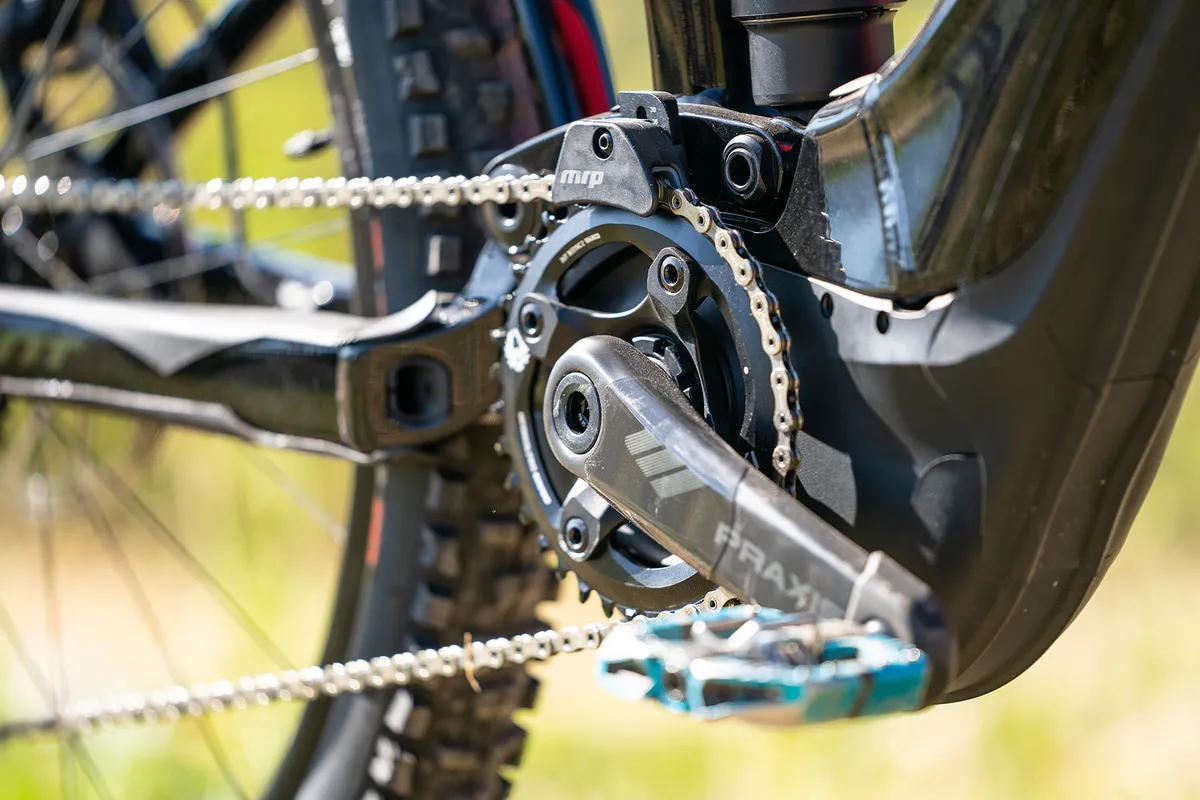
There are three models of the Reign E+, and all use the same frame.
The cheapest model forgoes the X2 shock in favour of a DPX2 shock and 36 Rhythm fork (among other things), while the middle model is without wireless shifting and wireless dropper post, and uses the cheaper performance dampers.
Giant Reign E+ pricing and availability
Giant Reign E+ 0 Pro
- Sizes: S, M, L
- Price: £6,999 / €7,999
Giant Reign E+ Pro 1
- Sizes: S, M, L, XL
- Price: £4,999 / €5,749
Giant Reign E+ Pro 2
- Sizes: S, M, L, XL
- Price: £4,499 / €5,175
Giant Reign E+ 0 PRO first ride impressions
After setting up the Reign E+ in the car park and feeling relatively comfortable with the overall balance of the bike, I dropped into the first steep, slow and technical descent.
Coming into one of the steeper tight turns on the trail where I wanted to drop my heels, load up the tyres and hit the brakes hard to slow down, it was apparent that my weight felt as if it was too far forward and things simply didn’t feel quite right in terms of distribution and balance on the bike.
This bike isn’t just designed for going downhill and, as the ride progressed, I was able to get a good feel for the motor and its various modes
As I exited the trail, I came away feeling like I needed to swap the 45mm stem for a shorter number and slap on a higher rise bar to help compensate this sensation. I’d already stacked all the steerer spacers beneath my stem to maximise bar height, and while this may have helped somewhat, it’s unlikely to totally eradicate the problem.
That’s because much of this issue is down to the fact that the rear centre of the bike is so long – a problem more likely felt or at least accentuated on the smaller frame sizes with lower reach figures.
In a bid to help compensate, I did increase shock sag, reduce low-speed compression and increase rebound damping (high and low) to help keep my weight further back when things got steep.
I also added some low-speed compression damping to the fork to help prop it up when the gradient increased. While this did help a little with balance and stability as well as bolster my confidence, it was a marginal improvement and certainly didn’t remedy the problem I was feeling.

Naturally, this bike isn’t just designed for going downhill and, as the ride progressed, I was able to get a good feel for the motor and its various modes.
During the lengthy transitions between trails, I ensured I spent a good deal of time in the Smart Assist mode which matches effort levels and terrain well. But even when you’re really cranking hard on a steep climb, it rarely, if ever, accessed the Turbo mode.
I asked Giant about this and it said: “reaching this kind of support does require rather extreme circumstances, both in the form of human input (high power) and terrain input (steep slope). Also, our Smart Assist mode is focused on being very battery efficient and will not give this kind of support unless you absolutely need it.”
That’s no bad thing though, and can be a really useful feature on longer rides where you’re looking to maximise battery life. It also helps that Giant’s RideControl 1 remote is easy to use and quickly toggles between motor modes, meaning it’s not a problem to switch out of the Smart Assist as and when you feel necessary.
Point the Reign E+ uphill and it’ll confidently scramble up obscene slopes, providing it’s piloted with precision. Thanks to that long back-end, there’s no issue with front wheel lift either. I did end up preferring to climb steeper, technical, loose, punchier rises in one of the dedicated motor modes though, finding it easier to maintain consistent traction through the rear wheel.
Power delivery is relatively smooth, but still more abrupt and not as natural as the likes of the Specialized Levo. The rear suspension stays settled under power and I never once reached down to flip the low-speed compression shock on the X2 shock because things felt efficient enough while it remained fully open.
It’s worth noting that when your foot is resting on the pedal when stationary the motor begins to engage and to judder the whole bike, which is irritating – something some of testers have noted on the Shimano motor also. It’s by no means the end of the world, but worth knowing.
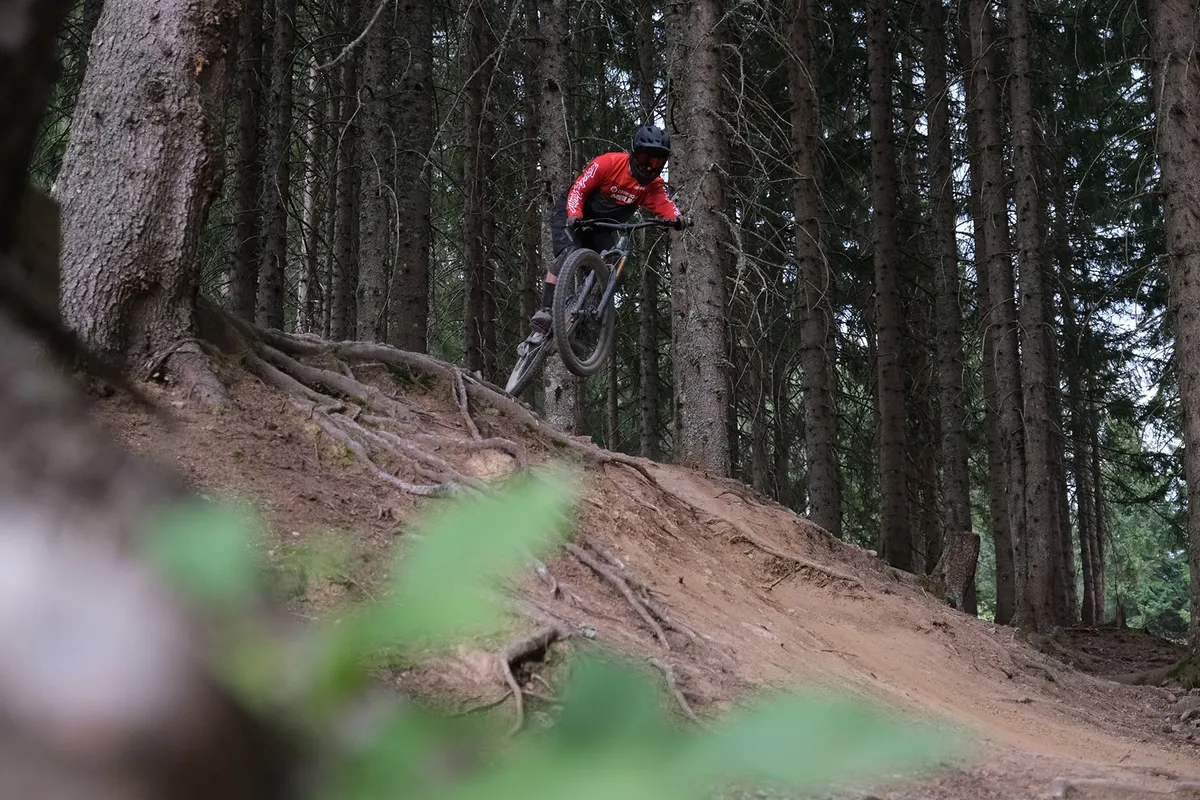
After tackling some rather steep, loose switchback bends where the Reign E+ just about be muscled through (I really appreciated the massive 220mm front rotor here), the gradient mellowed and I entered some of the most amazing singletrack, which balanced flow and technicality beautifully.
While the shock settings I’d settled on dulled the liveliness of the bike somewhat, the back-end certainly felt composed when tackling the less repetitive but bigger hits. Lifting the front wheel up and over obstacles isn’t an easy task though, again due to the long back-end, which is something a shorter stem and higher rise bar would help with.
This meant there were definitely times where I simply clattered into trail features rather than lofting the front of the bike up and over in a bid to better finesse my way through.
Away from the natural trails I hit a couple of the well-established bike park runs in Les Gets where, at high speeds, the Regin E+ felt planted and stable when it mattered and jumping the bike felt safe.
Overall, while there’s no doubt the Reign E+ has the potential to tackle some seriously terrifying terrain (up or down), it just doesn’t feel as quite as confident doing it when compared to its current contemporaries, which is a shame.
Giant Reign E+ 0 PRO early verdict
A solid spec and intelligent motor but the Reign E+’s long back-end means it’s not as manoeuvrable, agile or confident as some of its competitors when things get technical.
Giant Reign E+ 0 PRO geometry
- Head angle: 64.5 degrees
- Seat angle: 76 degrees
- Stack: 60.2cm
- Reach: 45.2cm
- Wheelbase: 1,249mm
Product
| Brand | Giant |
| Price | £6999.00 |
Features
| Fork | ox 36 Factory GRIP2 e-bike Optimised with 170mm of travel |
| Stem | Giant Contact 35, 45mm (medium) |
| Frame | ALUXX SL aluminium with 160mm of travel |
| Motor | Giant SyncDrive Pro |
| Tyres | Maxxis Minion DHF 3C MaxxTerra EXO+ 27.5x2.6in (f) and Maxxis High Roller II 3C MaxxTerra Double Down 27.5x2.6in (r) |
| Brakes | SRAM Code R (220mm front, 200mm rear rotors) |
| Cranks | Custom Praxis e-Carbon crankset |
| Wheels | Giant E-TRX carbon rims on E-TRX hubs |
| Shifter | SRAM X01 Eagle AXS |
| Cassette | PG-1230 cassette (11-50T) |
| Handlebar | Giant Contact SL 35, 800mm |
| Rear shock | Fox X2 Factory |
| Rear derailleur | SRAM X01 Eagle AXS |
| Features | Battery: Giant EnergyPak Smart 500Wh |
